MDHearing Aid vs. Eargo
A Side-by-Side Comparison of Two Affordable Over-the-Counter Hearing Aid Companies in 2025
SeniorLiving.org is supported by commissions from providers listed on our site. Read our Editorial Guidelines
MDHearing Fast Facts
- Budget-friendly OTC hearing aids
- Best for mild to moderate hearing loss
- Styles include BTE (Behind-the-ear) and CIC (completely-in-canal) devices
Eargo Fast Facts
- Best for early-onset hearing loss
- Discreet in-the-ear OTC hearing aids
- Customizable fit
MDHearing and Eargo are two well-established over-the-counter (OTC) hearing aid brands that are worth considering if you have mild to moderate hearing loss. Eargo is known for their discreet, in-ear devices, while MDHearing offers some of the most affordable hearing aids on the market. Both brands made our list of the best over-the-counter hearing aids in 2025. We have tested and reviewed hearing aids from both brands, and our resident audiologist, Dr. Ruth Reisman, has provided her insights about both brands based on her testing experience and feedback from her patients.
Read on to learn about their offerings and our experience with the brands, so you can choose the best hearing aid for your needs.
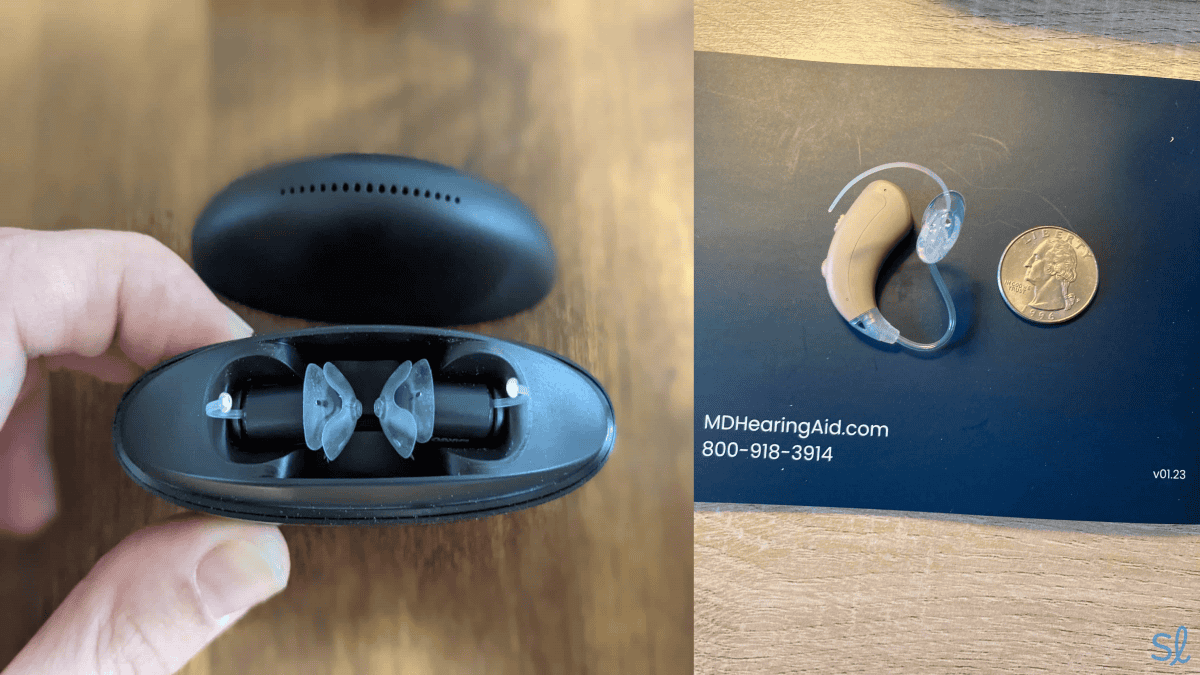
Our tech experts tested out several models from Eargo and MDHearing for this comparison guide.

MDHearing vs. Eargo Product Lineup

|

|
|
|---|---|---|
| Suitable for | Mild to moderate hearing loss | Mild to moderate hearing loss |
| Price range | $297 to $597 per pair | $799 to $2,699 per pair |
| Styles | BTE (behind-the-ear), mini-BTE, ITC (in-the-canal), CIC (completely-in-the-canal) | Earbud, CIC (completely-in-the-canal) |
| Special features | Background noise reduction, feedback cancellation | Sound Adjust+ with Clarity Mode emphasizes speech |
| Battery Types | Rechargeable | Rechargeable |
| Bluetooth streaming | Not available | Yes, in earbud style only |
| Hearing care support | Lifetime support package available for $200 | Yes |
| Trial period length | 45 days | 45 days |
| Manufacturer’s warranty length | 1 year | 1-2 years |
| Website |
See Pricing
Links to MDHearing
|
See Pricing
Links to Eargo
|
MDHearing
MDHearing’s current lineup includes six hearing aid models:
- MDHearing VOLT MAX: These BTE hearing aids feature intelligent noise reduction and smartphone compatibility for the most high-tech model MDHearing offers.
- MDHearing VOLT: These hearing aids have advanced feedback cancellation with manual volume controls.
- MDHearing AIR: This mini-BTE style is smaller than VOLT, and it provides good sound quality.
- MDHearing NEO XS PRO: MDHearing’s smallest hearing aids come with bluetooth connectivity.
- MDHearing NEO XS: This rechargeable hearing aid has silicone domes in multiple sizes for discretion.
- MDHearing NEO: These ITC hearing aids produce clear sound and discretion.
MDHearing produces high-quality, basic hearing aids at a very low price point. All of their hearing aids are rechargeable and easy to use. One thing to note is that only the latest models connect to an app for volume and program adjustments. If using your hearing aids to stream phone calls or media is important to you, you may be better off with other brands, such as Phonak or Signia, which are available by prescription.

One of the things we like about MDHearing is their clear and concise instruction manuals. We ordered each style, and our package came with a “Read Me First” mini packet that gave us week by week input on how to get used to our hearing aids. There was a comprehensive User Manual, plus tip cards on how to charge and clean our hearing aids. They even came with a Tips and Tubing Calendar that helps you keep track of when to replace each hearing aid part. This brand clearly understands the needs of seniors who are first-time hearing aid users.
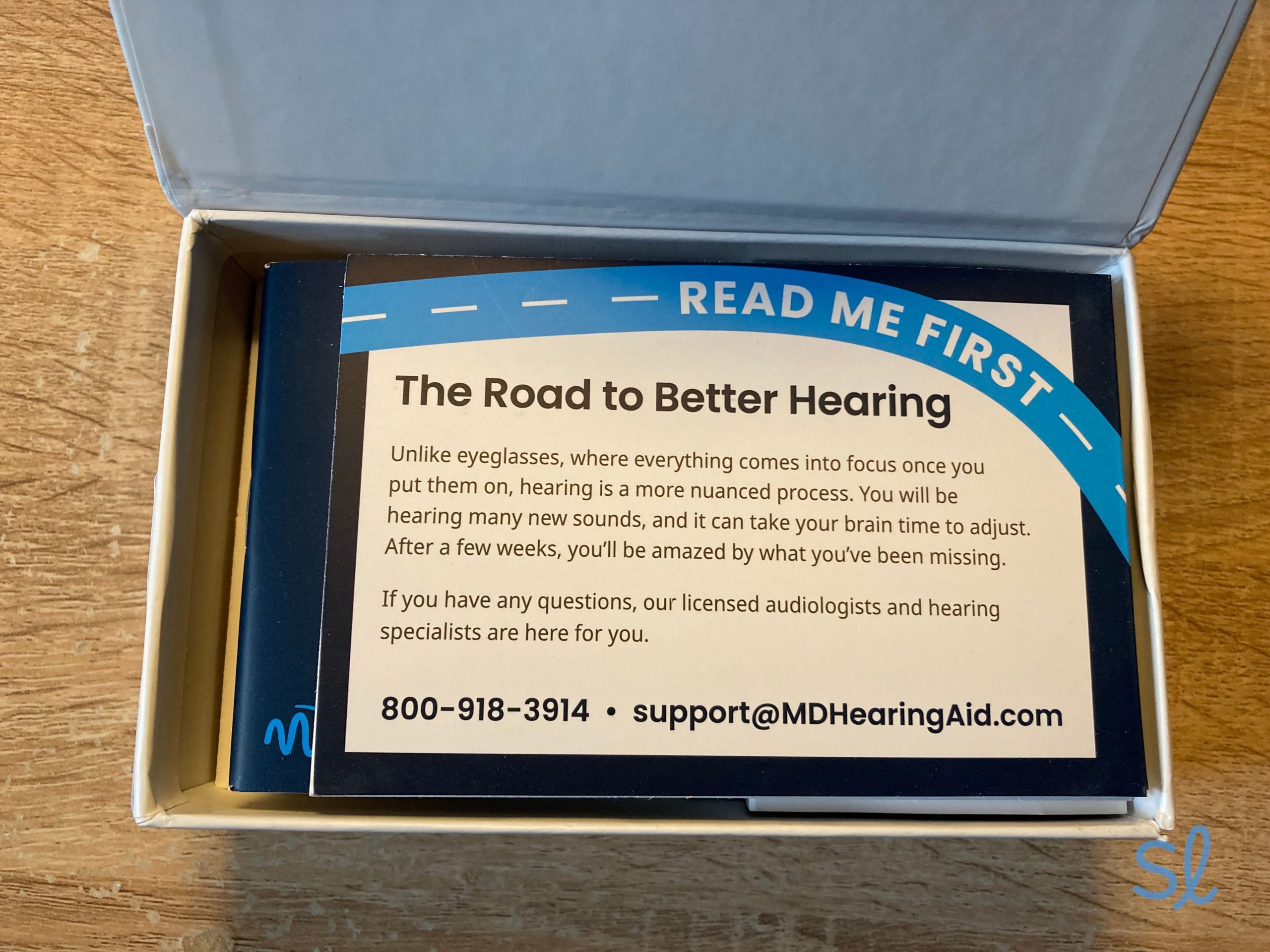
Reading MDHearing's instructions for my NEO XS devices
We tried out MDHearing VOLT, one of the brand’s BTE models, at home and were very impressed with how comfortable they were. The sound quality was clear and the controls on each hearing aid were easy to reach and use. If you’re new to hearing aids, the VOLT’s larger size may be a bit intimidating when you first open the box. But on the ear, they’re pretty discreet. I wish they came in more colors, but was told by the company that beige is the color that sells the most.
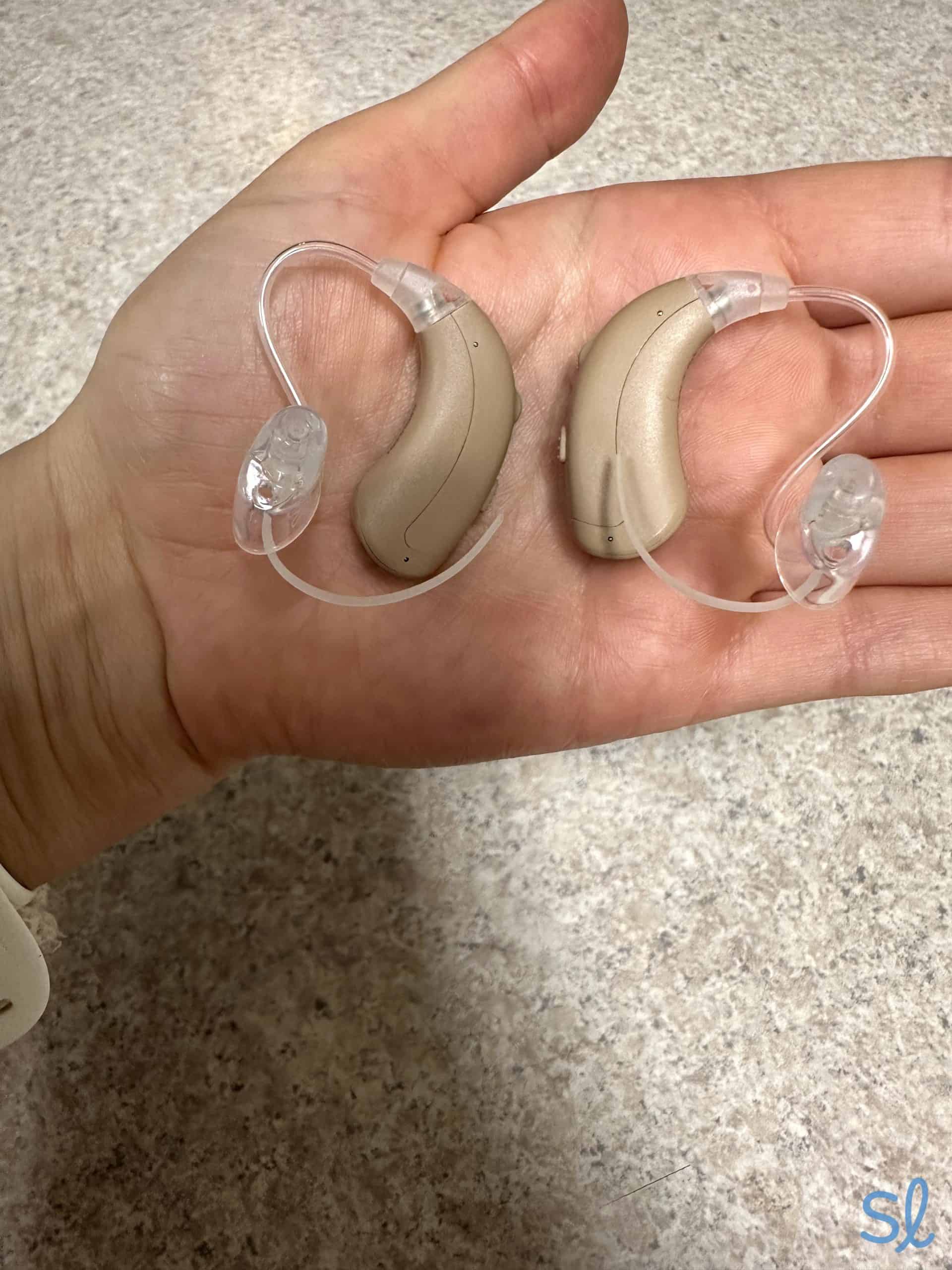
Testing out MDHearing's VOLT devices
If you want something smaller that offers the comfort and security of a BTE model, MDHearing’s AIR model may be a great choice for you. It’s on the low-cost end of MDHearing’s budget-friendly spectrum. These hearing aids are less technologically advanced than VOLT, but we found that they still provide great noise reduction plus clear sound quality. Both VOLT, VOLT MAX, and AIR come with four sound environment settings, but only VOLT and VOLT MAX have dual directional microphones. This can be super helpful for keeping up with conversations in noisy environments.
NEO, NEO XS, and NEO XS PRO are the most discreet MDHearing aid options, as they fit completely in the ear. Each style is practically invisible. When we tried out NEO XS, we found them a little challenging to place into our ear canals at first, which are on the smaller side. All models in the NEO line come with a variety of different-sized domes, so you can play around with the fit.
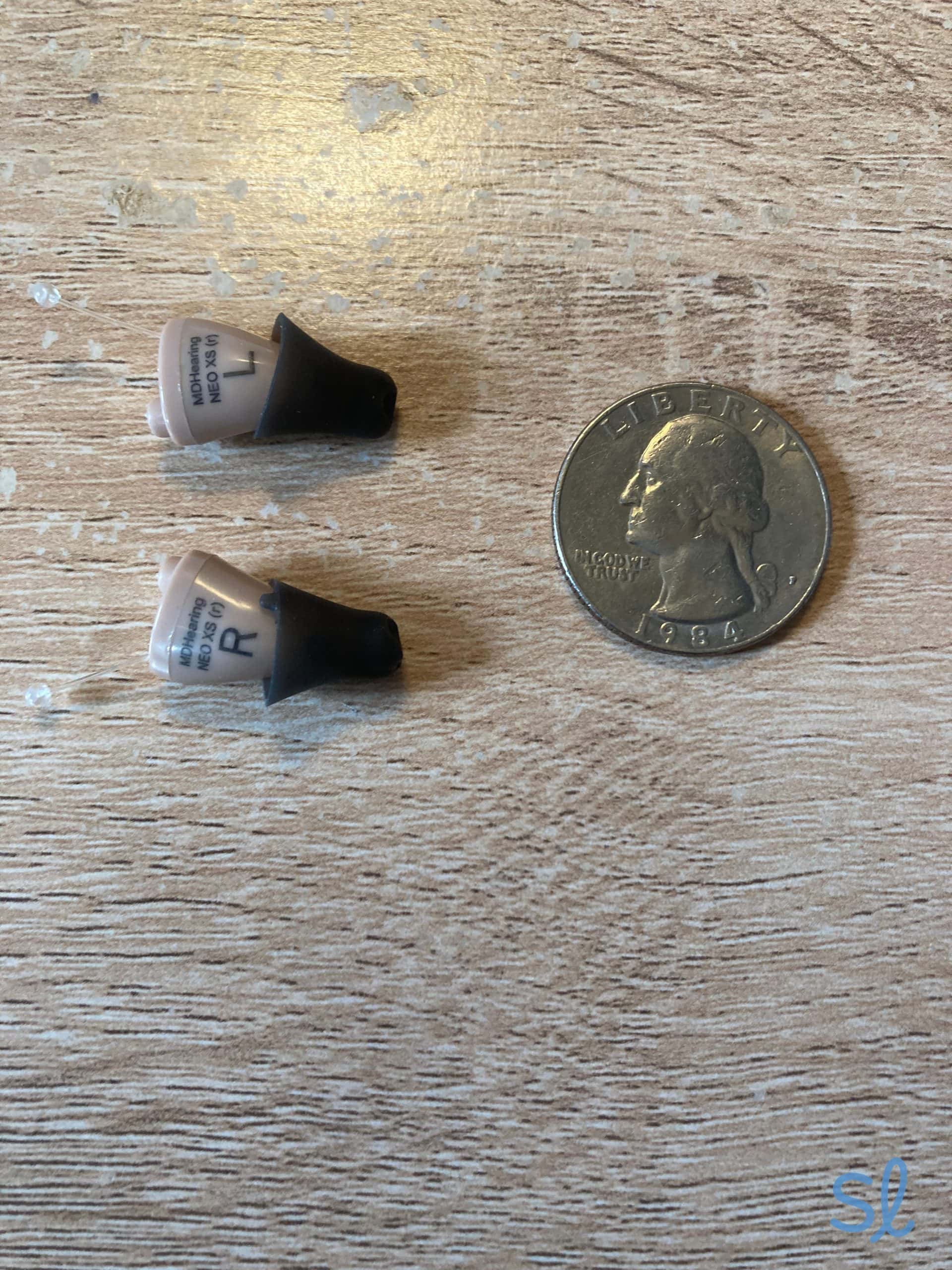
MDHearing, one of our favorite OTC brands, is a runner-up on our list of the best hearing aids for tinnitus.
Getting the domes on and off the hearing aids takes practice, and hand dexterity. If you have shaky hands or smaller ears like we do, you may be better off with some of the styles Eargo offers. Of the two, NEO XS is the most technologically advanced. It offers better noise reduction and feedback cancellation. It also has four listening environment settings, while the NEO only has one.
» Related Reading: MDHearing review
MDHearing Pros
- Budget-friendly devices
- Preprogrammed with one to four listening environment settings
- Decent noise cancellation and feedback reduction
- BTE and in-ear options
- Lifetime support available
MDHearing Cons
- No Bluetooth streaming
- CIC styles may be too large for small ears
- Ongoing audiological support costs extra
Eargo
Eargo’s current hearing aid lineup is comprised of three styles:
- Eargo 7: Eargo’s virtually invisible, most technologically advanced hearing aid
- Eargo SE: This CIC hearing aid is compact in size and less expensive than Eargo 7
- LINK by Eargo: A Bluetooth compatible, earbud-style hearing aid
Eargo is one of the most technologically-advanced OTC hearing aid providers you’ll find. This brand also offers lifetime audiological support, which is a huge perk since hearing needs can change over time.
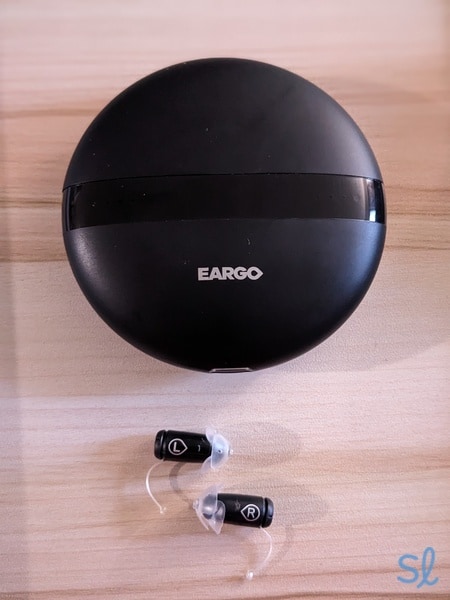
Testing out Eargo 7 hearing aids
Eargo 7 and Eargo SE are both completely-in-canal (CIC) styles. They come with a selection of open and closed petals in varying sizes. A member of our tech team tried out Eargo 7. She has very small ear canals, so she had trouble with fit. However, Eargo 7 fit her mom perfectly. We tried out Eargo SE as well and found them to be a comfortable fit. Eargo sends free samples of non-working hearing aids to those who request them. This is a no hassle way to find out if the hearing aids will fit comfortably, prior to purchase.
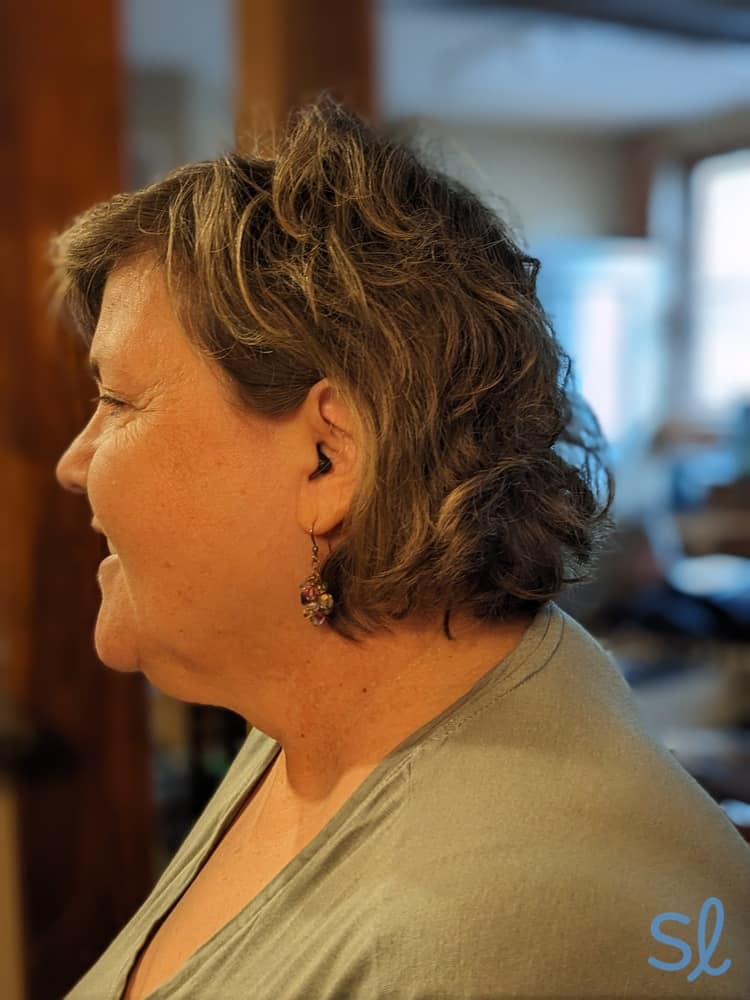
Eargo's hearing aids are nearly invisible, as seen in the photo above.
The technologically advanced Eargo 7 is programmed with a feature called Sound Adjust+ with Clarity Mode. After setting up your personalized hearing profile in the Eargo app, this enables your hearing aids to automatically adjust to your sound environment. This frees you up from having to manually alter the volume or change the program. Our tester found the sound quality of Eargo 7 to be sharp, and clear. Check out our Eargo 7 review, to learn more about our experience with this model.

Eargo SE doesn’t come equipped with Sound Adjust, but it does have four preset programs you can manually adjust by tapping your ear. You can also use the Eargo app to change programs in both ears at the same time.
» Related Reading: Eargo hearing aid review
Eargo 7 and Eargo SE don’t have Bluetooth streaming capabilities. If this is important to you, you may want to try LINK by Eargo. LINK looks like an earbud, not like a hearing aid. You can easily switch between hearing aid mode and streaming. We have pretty much become addicted to LINK. We use them in challenging hearing environments, like the subway. We also love using them to listen to music or podcasts. Their sound quality is resonant and clear. They’re a great choice for someone with mild hearing loss, with or without tinnitus.
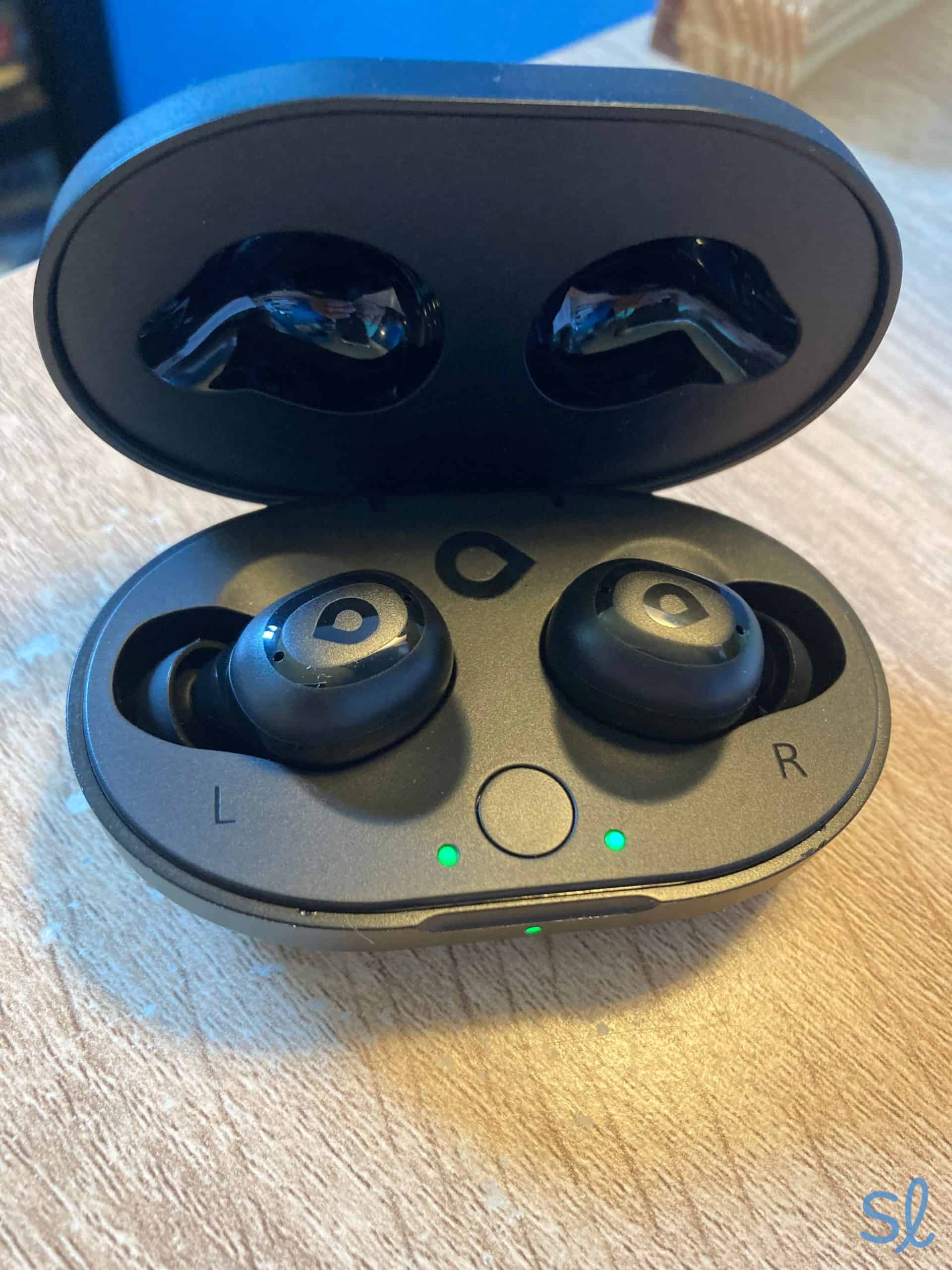
Testing out LINK by Eargo, the company's earbud-style hearing aids.
Eargo Pros
- Discreet styles
- Non-working samples available by request
- Crisp, clear sound quality
- Hearing personalization through the mobile app
- Lifetime support included in cost
Eargo Cons
- More expensive than some other OTC brands
- CIC models may be too small for some ears
- Only one style has Bluetooth streaming
Pro Tip: If you’re unsure whether a BTE or ITE hearing aid is better for your needs, head over to our hearing aid buying guide. You’ll find everything you need to know about the different styles of hearing aids and choosing between them.
Need Help Finding the Right Hearing Aid?
Answer a few easy questions to find the hearing aid that’s right for you.
How Much Do MDHearing and Eargo Cost?
MDHearing is more affordable than Eargo with costs ranging from $297 to $397. However, their hearing aids are less advanced and provide less clear sound quality than Eargo. Eargo hearing aids range from $799 to $2,699 per pair. While they’re much more expensive, we believe they’re worth the cost if you want more advanced features, a mobile app for remote adjustments, and the ultimate discretion.
Both Eargo and MDHearing are very affordable compared to prescription options, which can cost from $2,000 to $8,000 per pair. Just remember that these OTC brands are only suitable for mild to moderate hearing loss.
Did You Know? Protecting your hearing may reduce your risk for dementia. Hearing loss is a risk factor for this condition in older adults. 1
Another plus for both brands is price transparency. Unlike prescription hearing aids, which don’t list their prices online and vary between providers, OTC brands list their prices online, so you can easily compare and check for sales.
Follow-up Care
Both Eargo and MDHearing offer lifetime audiological support. Unlike MDHearing, this service is free when you buy any Eargo hearing aid style. You can purchase a VIP Care Package from MDHearing for $200. This provides you with audiological input about fit, wear, and sound optimization for your hearing aids during scheduled video chat appointments. You can also schedule phone appointments, if you prefer. Personalized follow-up care is available as needed. If you don’t purchase the package, you can contact the company for general support information about fit and other issues.
Final Thoughts: MDHearing vs. Eargo
For those who want hearing aids that can be purchased easily online, you really can’t go wrong with MDHearing or Eargo. The choice will come down to your lifestyle and budget. MDHearing is our pick for those who want simple, no-frills hearing aids at some of the lowest prices on the market. On the other hand, we’d recommend Eargo for seniors who want more discreet, comfortable, and customizable hearing aids with a price tag to match.
Take Our Free Online Hearing Test
Wondering if you have hearing loss?
Grab your headphones and get an evaluation in minutes.
Our Methodology: How We Tested and Compared Eargo and MDHearing
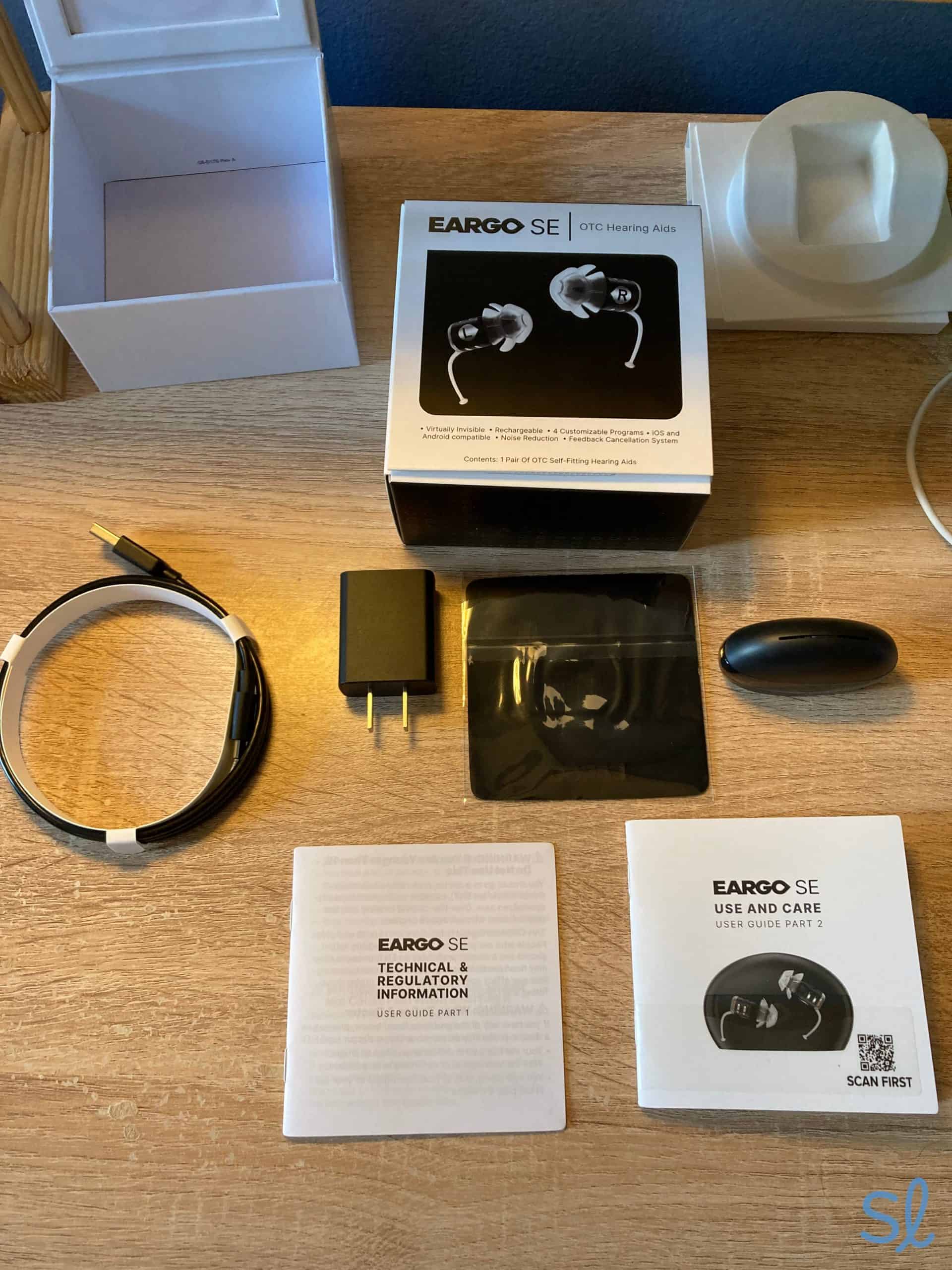
Unboxing Eargo SE, one of the brand's most affordable models.
Members of our tech and audiological teams ordered, unboxed, tested, and wore several hearing aid styles from each brand. We spent over 100 hours analyzing the sound quality these hearing aids produced. We wore each hearing aid model for a week, using them in various environments, including in quiet settings and more complex listening environments.
We assessed each brand for important attributes like ease of setup, fit, charging times, cost, programming capabilities, and customer service. We connected with customer service reps from both brands via phone and online chat.
MDHearing doesn’t connect to an app, but Eargo does. We spent time downloading and using the Eargo app. We personalized our Eargo 7 devices through the app to see how it would function based on our individualized needs.
We compared these brands to each other and to additional companies that sell hearing aids over-the-counter or by prescription.
Here’s what our testing process looked like:
- We started this process by researching MDHearing and Eargo hearing aids online. We kept the needs of seniors and first-time hearing aid users in mind. Our team took online hearing tests from both brands and compared the results. We then reached out to each company and requested hearing aids that we could try out and analyze.
- Once our hearing aids arrived, we individually reviewed each hearing aid’s packaging and product manuals. We charged and set them up according to instructions. We timed these processes to see if they varied from the printed time estimates provided by both companies.
- We downloaded the Eargo mobile app and explored it for ease of use, any glitches or issues, and programming capabilities.
- We tried out all of the app’s various features, including the Sound Match hearing test.
- We tried on and wore our hearing aids in a variety of indoor and outdoor environments for a week.
We broke down our experience into the following important categories and compared the two brands for each:
- Cost
- Ease of use
- Discretion
- Comfort
- Customer service
- Reliability
- Warranties and risk-free trials
Alzheimer's Society. (2024). Hearing loss and the risk of dementia.

